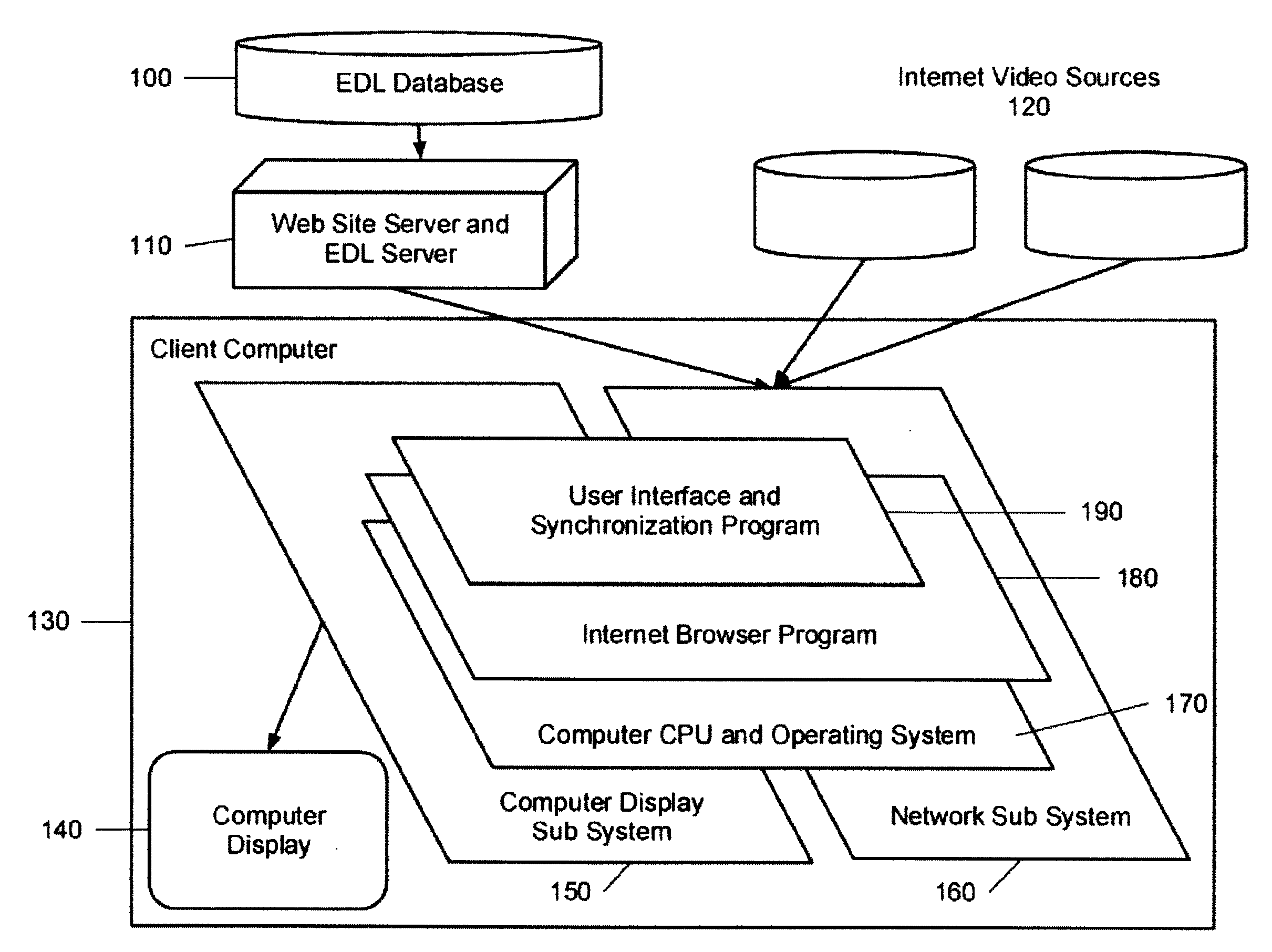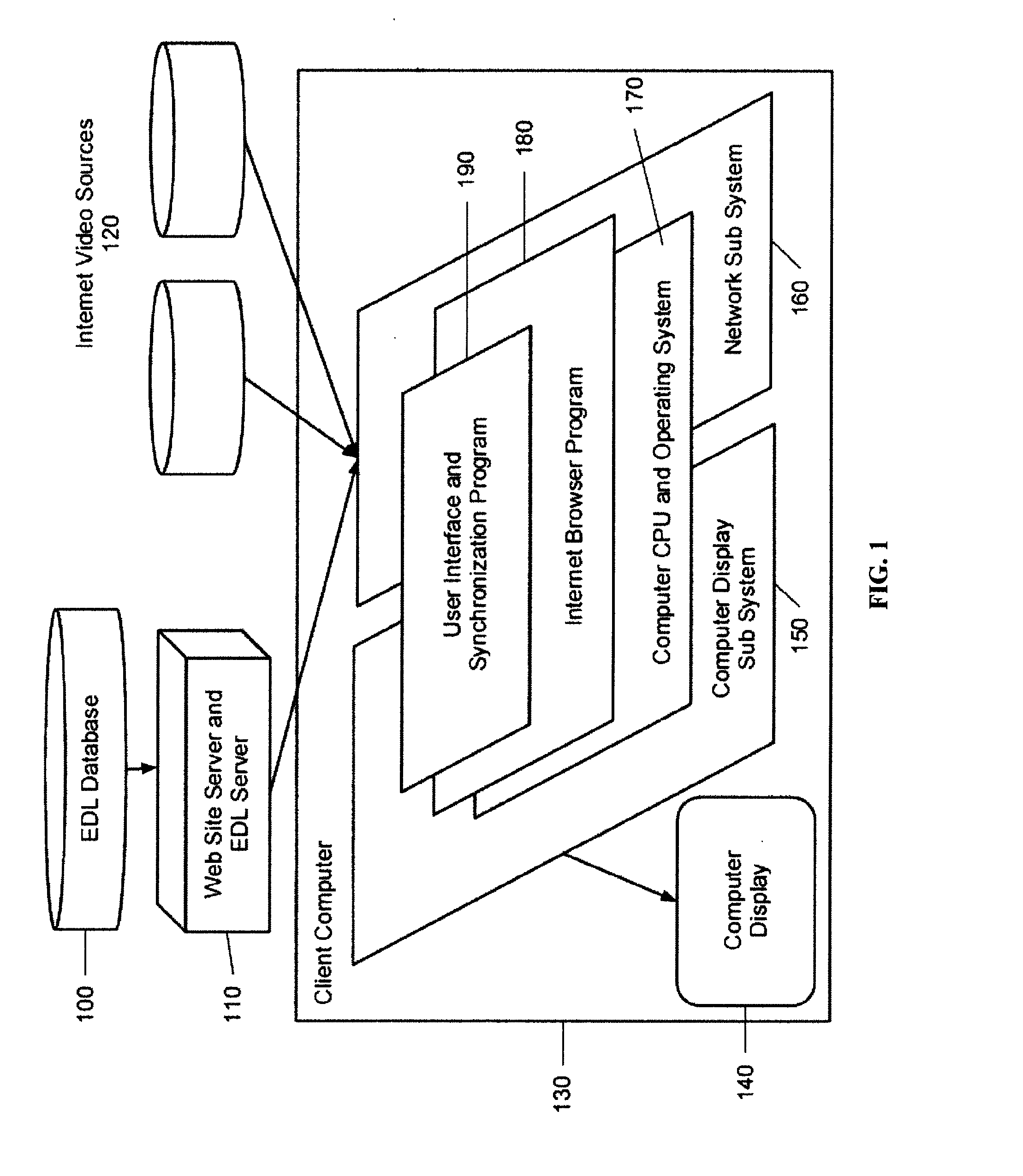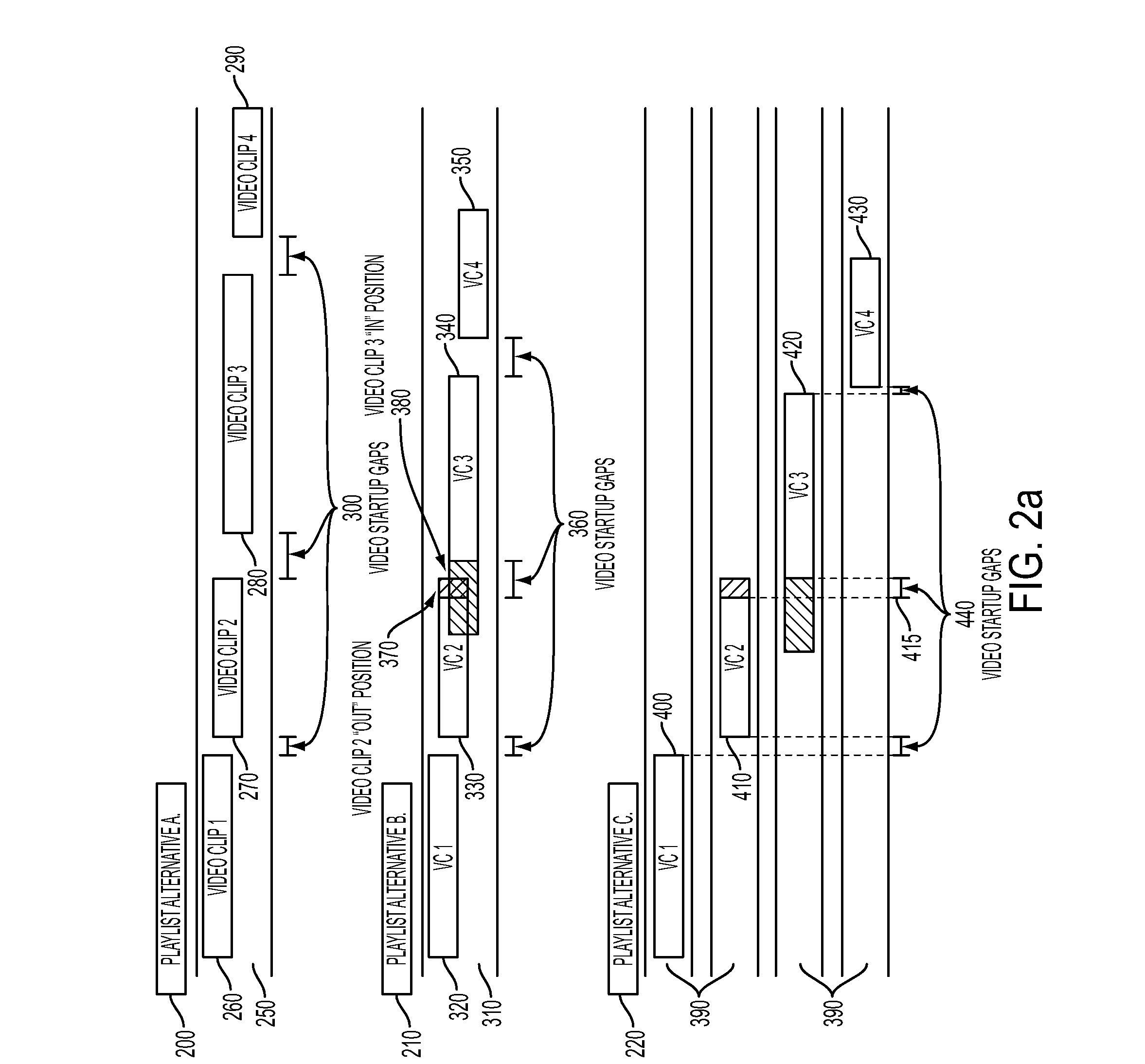Streaming internet video editing and composite edit playback
a composite edit and internet video technology, applied in the field of time sequenced multimedia editing and composite edit playback, can solve the problems of visual disruption, no known tools for providing such accuracy for multiple streaming audio/visual sources, and it is difficult, if not impossible, for viewers to see the original context of edits, or for other editors to create alternative composite edits. to facilitate the download of a first video and a second video
- Summary
- Abstract
- Description
- Claims
- Application Information
AI Technical Summary
Benefits of technology
Problems solved by technology
Method used
Image
Examples
example use cases
[0046]“Best of” Compilations from Diverse Sources[0047]For example, an internet based blog writer may want to include a composite of the funniest clips of cat videos from internet sources. Rather than presenting these videos within separate embedded browser windows, they would likely prefer to string together excerpts in a single video playback window.
[0048]Excerpts from Copyright Protected Sources[0049]For example, an internet sports reporter may want to display compiled hightlights from a basketball game video that has been posted on the internet. This invention: (a) does not copy the original source material, (b) allows for links to the original source material, and (c) allows the original source creator to retain control of the source material's display. Therefore, it may provide sufficient protection of the source creator's rights while still allowing for the reporter to provide effective reporting to their audience.
[0050]Near Context Editing[0051]For example, suppose a politic...
PUM
 Login to View More
Login to View More Abstract
Description
Claims
Application Information
 Login to View More
Login to View More - R&D
- Intellectual Property
- Life Sciences
- Materials
- Tech Scout
- Unparalleled Data Quality
- Higher Quality Content
- 60% Fewer Hallucinations
Browse by: Latest US Patents, China's latest patents, Technical Efficacy Thesaurus, Application Domain, Technology Topic, Popular Technical Reports.
© 2025 PatSnap. All rights reserved.Legal|Privacy policy|Modern Slavery Act Transparency Statement|Sitemap|About US| Contact US: help@patsnap.com



